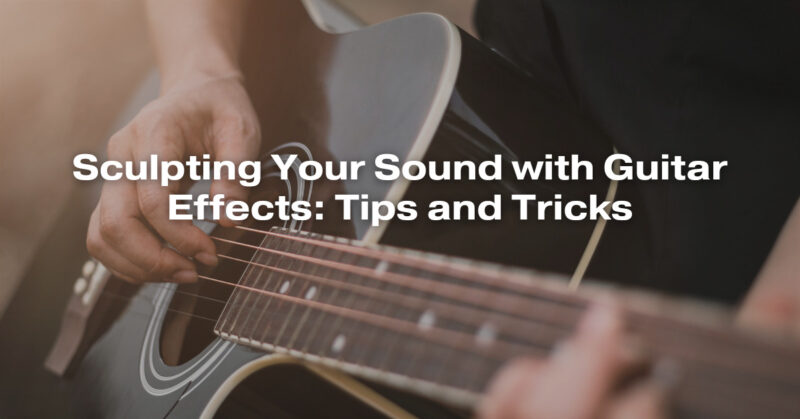Guitar effects pedals are powerful tools that allow you to shape and enhance your guitar’s sound, creating unique tones and textures that elevate your playing. Whether you’re a beginner or an experienced guitarist, this guide will provide you with tips and tricks for sculpting your sound with guitar effects pedals and making the most of these sonic tools.
Understanding Guitar Effects Pedals
Before we dive into tips and tricks, let’s briefly explore the main types of guitar effects pedals:
1. Distortion and Overdrive: These pedals add grit, saturation, and sustain to your guitar sound. They are essential for achieving classic rock and metal tones.
2. Delay: Delay pedals create echoes and reflections of your guitar notes, adding depth and space to your sound. You can create anything from subtle slapback to ambient textures.
3. Reverb: Reverb pedals simulate the sound of different acoustic spaces, from small rooms to vast cathedrals. They add a sense of spaciousness and atmosphere to your playing.
4. Modulation: Modulation effects include chorus, phaser, flanger, and tremolo pedals. They alter the pitch, timing, or amplitude of your guitar signal to create swirling, swirling, or rhythmic textures.
5. Wah-Wah: Wah pedals produce a dynamic and expressive filter sweep effect. By rocking the pedal back and forth, you can mimic vocal-like sounds and shape your guitar’s tone.
6. Pitch Shift and Octave: These pedals alter the pitch of your guitar signal, allowing you to create harmonies, detuned effects, or even octave-up and octave-down sounds.
7. Looping: Loop pedals record and play back short sections of your guitar performance, enabling you to layer multiple parts and create loops for solo jamming or composition.
Tips and Tricks for Using Guitar Effects
Now, let’s explore tips and tricks to enhance your use of guitar effects pedals:
1. Start Simple: If you’re new to effects pedals, begin with one or two basic pedals like distortion or delay. Learn how to use them effectively before adding more complex effects to your setup.
2. Order Matters: The order in which you connect your pedals can significantly affect your sound. Generally, place distortion and overdrive pedals first in the chain, followed by modulation, delay, and reverb pedals. Experiment with different orders to find your preferred sound.
3. Tap into Tap Tempo: If your delay or modulation pedal has a tap tempo feature, use it to synchronize your effects with the song’s tempo. This ensures your delays and modulations are in rhythm with the music.
4. Use the Volume Knob: Don’t underestimate the power of your guitar’s volume knob. Rolling it back can clean up your tone when using distortion or overdrive pedals. Gradually increase it for dynamic swells and solos.
5. Explore Expression Pedals: Expression pedals can be used with various effects to control parameters like wah-wah pedal sweeps, delay feedback, or modulation depth in real time. They add a new level of expressiveness to your playing.
6. Experiment with Stacking: Try stacking multiple effects pedals to create unique textures. For example, use a reverb pedal before a delay pedal to produce ethereal, ambient sounds.
7. Tweak Settings Live: Don’t be afraid to adjust your pedal settings during a performance. It can be a creative and dynamic way to shape your sound on the fly.
8. Layer Effects: Use multiple pedals simultaneously to layer effects. For instance, combine a phaser with a tremolo for swirling, rhythmic textures.
9. Use Effects Sparingly: Less can often be more when it comes to effects. Subtle use of effects can enhance your playing without overwhelming it.
10. Save Presets: If you have multi-effects or digital pedals, take advantage of preset saving features to quickly recall your preferred settings for different songs or styles.
11. Learn from Others: Study the techniques of guitarists you admire who use effects pedals. They can inspire your creativity and help you discover new ways to use your own pedals.
12. Record and Experiment: Recording your guitar with effects can reveal new possibilities and inspire creative experimentation. Use recording software or a looper pedal to capture your ideas.
Conclusion
Guitar effects pedals are versatile tools that can transform your guitar sound and add depth to your playing. By following these tips and tricks and experimenting with different pedals and settings, you can unlock your full creative potential and sculpt your own unique sonic landscape. So, plug in, step on those pedals, and let your imagination run wild as you shape your sound to perfection.


